#Silesian Piasts
Explore tagged Tumblr posts
Text
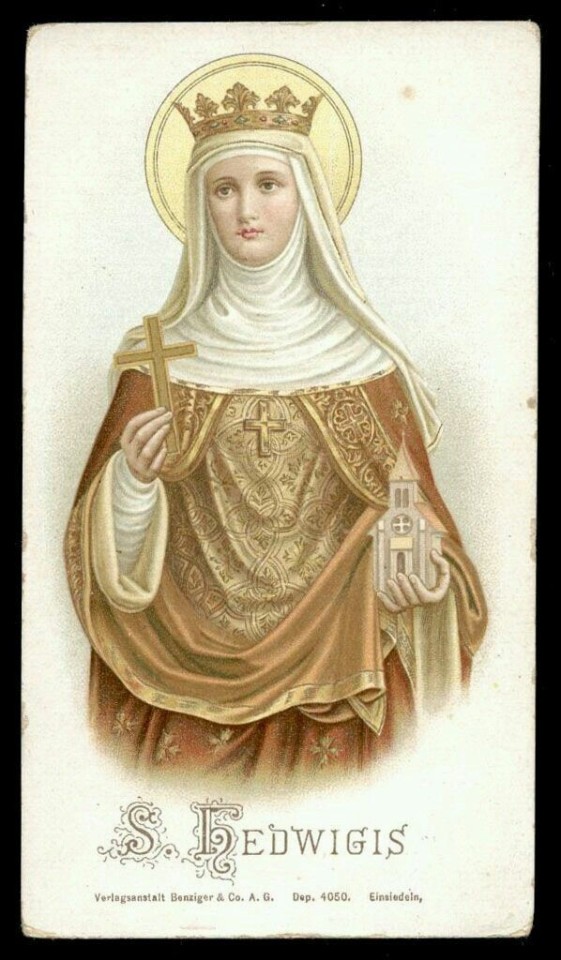
Hedwig of Silesia (also Hedwig of Andechs; 1174-1243) was a member of the Bavarian comital House of Andechs. She was Duchess of Silesia from 1201 and of Greater Poland from 1231 as well as High Duchess consort of Poland from 1232 until 1238. She was canonized by the Catholic Church in 1267 by Pope Clement IV.
#saints#catholic church#christianism#Świyntŏ Hyjdla#Heilige Hedwig von Andechs#Święta Jadwiga Śląska#Hedwig of Silesia#Księstwo śląskie#Herzogtum Schlesien#Slezské knížectví#royalty#House of Piast#Silesian Piasts#german aristocracy#Duchy of Wrocław#Królestwo Polskie#Kingdom of Poland#Regnum Poloniae
4 notes
·
View notes
Text
Silesian Sainte-Chapelle: St Thomas Becket’s Chapel, Piast Castle, Racibórz ~ Guest Post by Katarzyna Ogrodnik-Fujcik
Henry IV the Righteous in Codex Manesse. Photo courtesy of Wikimedia Commons ‘’Will no one rid me of this turbulent priest?’’ The words of King Henry II still echo ominously through the centuries and remain one of the best known in English history. The murder of Thomas Becket at the steps of his own cathedral shocked the Christian world. Henry II himself was deeply shaken. He may have not given…

View On WordPress
#Archbishop of Canterbury#Duke Henry IV the Righteous of Vratislavia#dukes of Racibórz#Henry II#King of England#medieval history#Piast Castle#Piast dynasty#Polish history#Premyslid dukes of Opava#Silesia#Thomas Becket#Thomas Bishop of Vratislavia
1 note
·
View note
Photo
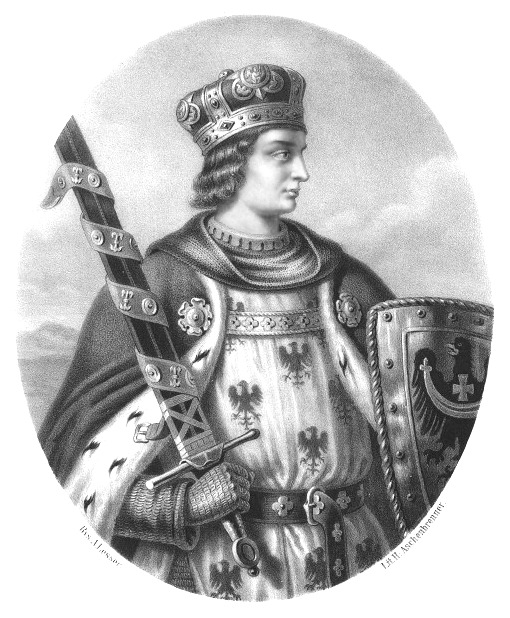
Henryk IV Probus by Aleksander Lesser.
#Aleksander Lesser#królestwo polskie#house of piast#piastowie#dynastia piastów#kingdom of poland#henryk iv probus#high duke of poland#Duke of Silesia-Wrocław#duke of silesia#silesian branch
6 notes
·
View notes
Photo




Remains of 13th-century Chojnik Castle in Jelenia Góra, Lower Silesia, Poland.
Source: zaplanujpobyt.pl
90 notes
·
View notes
Photo
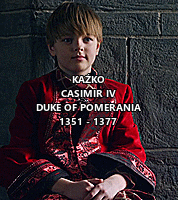
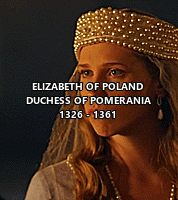







Branches of the Piast dynasty continued to rule in the Duchy of Masovia and in the Duchies of Silesia until the last male Silesian Piast died in 1675. The Piasts intermarried with several noble lines of Europe, and possessed numerous titles, some within the Holy Roman Empire. x
#weloveperioddrama#perioddramaedit#the crown of the kings#poland#polish history#piast dynasty#Casimir III Great#elizabeth of poland#władysław I the elbow-high#kunigunde of poland#casimir iv of pomerania#bolko II the small#s1#s2#korona królów
128 notes
·
View notes
Text
Czech Statehood Day

I had a few options for national days of the Czech Republic. As you can see, I ended up going with Czech Statehood Day, which commemorates the feast day of St. Wenceslaus, also known as Wenceslaus I or Good King Wenceslaus, who is the patron saint of the Czech Republic. (Sounds a little nicer than, “on this day, over a thousand years ago, the king got stabbed by his brother with a lance.”) Like many countries made up of numerous historical regions, the Czech coat of arms features three individual coats: Bohemia in the first and fourth quarters, Moravia in the second, and Silesia in the third. The full blazon is as follows: Per quarterly, I and IV, gules a lion rampant double-queued argent, armed, langued, and crowned or (Bohemia); II azure an eagle displayed chequy argent and gules, armed and crowned or (Moravia); III or an eagle displayed sable armed and langued gules, crowned of the field, charged with a cross couped issuant from a crescent argent (Lower Silesia).
The first properly Czech state was the Duchy of Bohemia, which became part of the Great Moravian Empire around 830. Bohemia was established as a kingdom around 1198 by Ottokar I, and by 1300, the double-queued lion with the crown was firmly established as the arms of Bohemia. There’s a legend that in the 12th century, Emperor Frederick granted Vladislaus II the arms of gules a lion rampant argent to symbolize his valor, and the second tail was added later, as recognition for the military assistance Ottokar I provided against the Saxons. It’s a nice story, but it’s exactly the kind of unfalsifiable nice story that a lot of arms have, which is to say that it has the ring of a post hoc justification to me. In any case, the first depiction of these arms was in Gozzoburg Castle, which was probably built in the early- to mid-thirteenth century.
Not that the lion isn’t cool and all, but I can’t not mention the arms of the Přemyslid dynasty. They ruled Bohemia, first as dukes, then as kings, and other assorted parts of Eastern Europe for a good four and a half centuries. St. Wenceslaus, was a member, and their arms were a full-on FLAMING EAGLE. Er, argent an eagle displayed sable armed or enflamed gules. I will confess that, while I understand the desire to represent all the areas of the Czech Republic in the national arms to honor their unique histories and legacies, if I were designing these, I would not be able to resist the temptation of the flaming eagle. It’s just really cool! There are also some great myths around its origin, including one where Břetislav I gets the right to light his father-in-law’s lands on fire for some reason.
Ahem. Anyway. Moving on. Moravia (second quarter) got its start as Greater Moravia in 833; in the 890s, it covered a significant amount of territory and became known as the Great Moravian Empire. It was then promptly overrun by Magyars in 907. After Emperor Otto I defeated the Magyars in 955, Moravia found a second life as part of the Bohemian crown, and reached the status of a margraviate in 1182. The eagle chequy shows up shortly afterwards in 1233, on the seal of the Margrave Přemysl, a younger son of Ottokar I. I don’t think it’s too much of a stretch to assume this eagle might have some relation to the Přemyslid eagle, but it’s not completely clear. However it got there, it stayed pretty much the same until the establishment of Czechoslovakia in 1918. Some depictions have the chequy as or and gules, but it doesn’t seem like the distinction has any particular meaning.
Lastly, in the final quarter, are the arms of Lower Silesia, which we’ve touched on before. In my opinion, it’s far more justifiable on the Czech arms than on those of Liechtenstein, given that the Czech Republic does actually include parts of Silesia (though most of it falls in Poland). Silesia came under control of the Greater Moravian Empire sometime in the 9th century. It later passed to Poland and Germany before becoming part of the Crown of Bohemia in 1434. The exact ownership of Silesia fluctuated along with the rest of the borders in Eastern Europe, but it is today split between Poland, Germany, and the Czech Republic. The Silesian arms date back to around 1335; they seem to have derived from the Duchy of Wroclaw. I’m not entirely sure where the eagle comes from, but honestly, there’s no shortage of eagles in this part of the world. Could be the Přemyslids; could be the Piasts; could be the Holy Roman Empire. In the absence of a direct blood tie (like there is with Moravia), it’s not clear.
19 notes
·
View notes
Photo

WHAT HAPPENED ON MARCH 18 The Battle of Chmielnik occurred on 18 March 1241 during the Mongol invasion of Poland. It ended in the defeat of the Polish armies of Sandomierz and Kraków provinces.
Henry II the Pious (Polish: Henryk II Pobożny) (1196 – 9 April 1241) - of the Silesian line of the Piast dynasty was Duke of Silesia at Wrocław and Duke of Kraków and thus High Duke of all Poland as well as Duke of Southern Greater Poland from 1238 until his death.
ЧТО ПРОИЗОШЛО 18 МАРТА 18 марта 1241 г. состоялась битва при Хмельнике в ходе вторжения армии Монгольской империи в Польшу. Она окончилась частичным поражением польских сандомирской и краковской армий, что позволило монгольским войскам беспрепятственно ра��грабить Краков.
В это время в Польше правил король Генрих II Набожный (Благочестивый) - (1196 – 9 апреля 1241) - князь Кракова, Силезии и Великой Польши.
8 notes
·
View notes
Photo
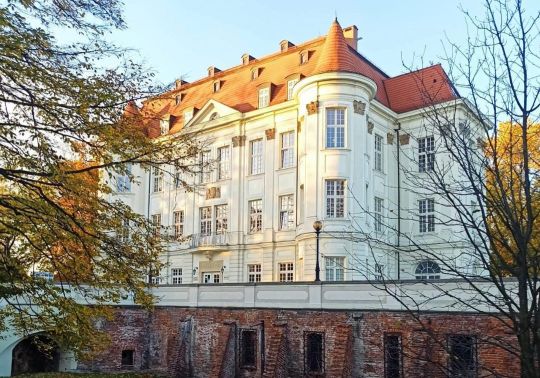
Leśnica, today the settlement on the western edge of Wrocław, formerly was an independent town, located on a previously wooded area, with a linear street system. It developed in the Middle Ages around the castle and church playing a service role for the Silesian Piast court on their way to Legnica and during hunting. In the thirteenth century it received city rights, and lost them in the eighteenth century. After the Piast dynasty had died out, it was sold by John of Luxembourg, and repeatedly changed its owners. In the nineteenth century it developed thanks to the industry, tourism and a convenient railway connection to Wrocław as well as hotel and restaurant facilities. In 1928, Leśnica was incorporated into Wrocław. After the Second World War, it lost its cultural continuity. In the 1970's, middle-heigh and high prefabricated buildings were built in the vicinity of a residential district. At the end of the twentieth and early twenty- first century, local industries were liquidated, and intensive land development started, causing the systematic blurring of its small-town character and its urban space started to acquire a character of a big city. #natura #ry #krajobraz #photooftheday #palace #miasto #ci #castello #zamky #landscape #zwiedzamy #architektura #castle #travel #photography #nature #architecture #castles #history #travelphotography #chateau #landscape #photooftheday #ig #europe #poland #medieval #love #castello #picoftheday (at Zamek Leśnica) https://www.instagram.com/p/CkL70d1I1Xw/?igshid=NGJjMDIxMWI=
#natura#ry#krajobraz#photooftheday#palace#miasto#ci#castello#zamky#landscape#zwiedzamy#architektura#castle#travel#photography#nature#architecture#castles#history#travelphotography#chateau#ig#europe#poland#medieval#love#picoftheday
0 notes
Photo
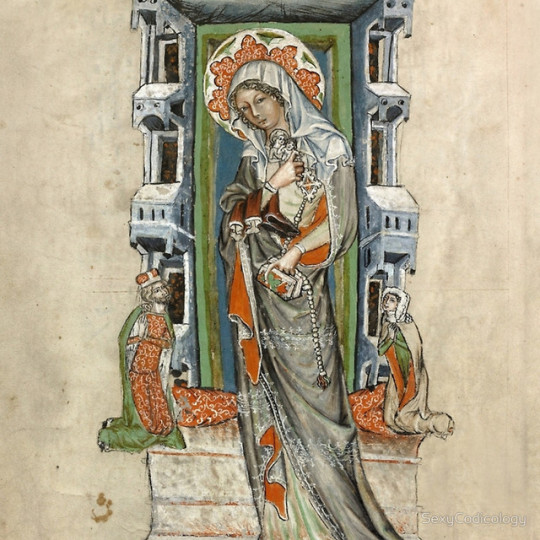
Saint Hedwig of Silesia - Feast Day: October 16th - Both Calendars
Patron of Orphaned Children
Life
The daughter of Duke Berthold IV of Merania and his second wife Agnes of Wettin, was born at Andechs Castle in the Duchy of Bavaria. Her elder sister Agnes married King Philip II of France (annulled in 1200), her sister Gertrude (killed in 1213) King Andrew II of Hungary, while the youngest Matilda (Mechtild) became abbess at the Benedictine convent of Kitzingen in Franconia, where Hedwig also received her education. By her sister Gertrude, she was the aunt of Saint Elizabeth of Hungary.
Duchess Consort
At the age of twelve, Hedwig married Henry I the Bearded, son and heir of the Piast duke Boleslaw I the Tall of Silesia. As soon as Henry succeeded his father in 1201, he had to struggle with his Piast relatives, at first with his uncle Duke Mieszko IV Tanglefoot who immediately seized the Upper Silesian Duchy of Opole. In 1206 Henry and his cousin Duke Wladyslaw III Spindleshanks of Greater Poland agreed to swap the Silesian Lubusz Land against the Kalisz region, which met with fierce protest by Wladyslaw’s III nephew Wladyslaw Odonic. When Henry went to Gasawa in 1227 to meet his Piast cousins, he narrowly saved his life, while High Duke Leszek I the White was killed by the men of the Pomerelian Duke Swietopelk II, instigated by Wladyslaw Odonic.
The next year Henry’s ally Wladyslaw III Spindleshanks succeeded Leszek I as High Duke; however as he was still contested by his nephew in Greater Poland, he made Henry his governor at Krakow, whereby the Silesian duke once again became entangled into the dispute over the Seniorate Province. In 1229 he was captured and arrested at Plock Castle by rivaling Duke Konrad I of Masovia. Hedwig proceeded to Plock pleading for Henry and was able to have him released.
Her actions promoted the reign of her husband: Upon the death of the Polish High Duke Wladyslaw III Spindleshanks in 1231, Henry also became Duke of Greater Poland and the next year prevailed as High Duke at Krakow. He thereby was the first of the Silesian Piast descendants of Wladyslaw II the Exile to gain the rule over Silesia and the Seniorate Province according to the 1138 Testament of Boleslaw III Krzywousty.
Widow
In 1238, upon his death, Henry was buried at the Cistercian convent of Trzebnica Abbey (Kloster Trebnitz), which he had established in 1202 at Hedwig’s request. The widow moved into the convent, which was led by her daughter Gertrude. She invited numerous German religious from the Holy Roman Empire into the Silesian lands, as well as German settlers who founded numerous cities, towns and villages in the course of the Ostsiedlung, while cultivating barren parts of Silesia for agriculture.
Hedwig and Henry had several daughters, though only one surviving son, Henry II the Piou, who succeeded his father as Duke of Silesia and Polish High Duke. The widow however had to witness the killing of her son, vainly awaiting the support of Emperor Frederick II, during the Mongol invasion of Poland at the Battle of Legnica (Wahlstatt) in 1241. The hopes for a re-united Poland were lost and even Silesia fragmented into numerous Piast duchies under Henry’s II sons. Hedwig and her daughter-in-law, Henry’s II widow Anna of Bohemia, establidshed a Benedictine abbey at the site of the battle in Legnickie Pole, settled with monks descending from Opatovice in Bobhemia.
Hedwig and Henry had lived a very pious life, and Hedwig had great zeal for religion. She had supported her husband in donating the Augustinian provostry at Nowogrod Bobrzanski (Naumburg) and the commandry of the Knights Templar at Olesnica Mala (Klein Oels). Hedwig always helped the poor and donated all her fortune to the Church. According to legend, she went barefoot even in winter, and when she was urged by the Bishop of Wroclaw to wear shoes, she took them in her hands. On 15 October 1243, Hedwig died and was buried in Trzebnica, while relics of her are preserved at Andechs Abbey and St. Hedwig’s Cathedral in Berlin.
Veneration
Hedwig was canonized in 1267 by Pope Clement IV, a supporter of the Cistercian order, at the suggestion of her grandson Prince-Archbishop Wladylaw of Salzburg. She is the patron saint of Silesia, of Andechs, and of the Roman Catholic Archdiocese of Wroclaw and the Roman Catholic Diocese of Gorlitz. Her feast day according to the General Roman Calendar is on October, 16. A 17th century legend has it, that Hedwig on a pilgrimage to Rome stopped at Zell in Austria, where she had healing waters spring up at a source which up to today bears her name.
In 1773 King Frederick II of Prussia, having conquered and annexed Silesia in 1742, had St. Hedwig’s Cathedral in Berlin built for the Catholic Upper Silesian immigrants, now the mother church of the Roman Catholic Archdiocese of Berlin.
Children
Hedwig and Henry I had seven children:
1. Agnes (ca. 1190 — before 11 May 1214).
2. Boleslaw (ca. 1191 — 10 September 1206/08).
3. Henry II the Pious (ca. 1198 — killed in Battle of Legnica, 9 April 1241)
4. Konrad the Curly (ca. 1198 — Czerwony Kosciol, 4 September 1213).
5. Sophie (ca. 1200 — before 22/23 March 1214).
6. Gertrude (ca. 1200 — Trebnitz, 6/30 December 1268), Abbess of Trebnitz
7. A son [Wladyslaw?] (before 25 December 1208 — 1214/17).
4 notes
·
View notes
Photo

Borders of Poland established by Testament of Bolesław III Wrymouth, 1138.
The last will and testament of the Piast duke Bolesław III Wrymouth/Bolesław III Krzywousty of Poland,established rules for governance of the Polish Duchy by his four surviving sons after his death. By issuing it, Bolesław planned to guarantee that his heirs would not fight among themselves, and would preserve the unity of his lands under the House of Piast. However, he failed; soon after his death his sons fought each other, and Poland entered a period of fragmentation lasting about 200 years.
Bolesław III issued the document around 1115-1 (between the birth of his son Leszek and the rebellion of Skarbimir); it would be enacted upon his death in 1138.
Granice państwa Bolesława Krzywoustego w 1138/Borders of Poland in the year of death Bolesław III Wrymouth in 1138
Bolesław divided the country into five principalities:
the Seniorate Province/Dzielnica Senioralna (or Duchy of Kraków), composed of western Lesser Poland, the eastern parts of Greater Poland, western Kuyavia and the lands of Sieradz, assigned to Bolesław's eldest son and future High Duke Władysław II/Władysław Wygnaniec, as well as the lands of Łęczyca which were held by Bolesław's widow Salomea of Berg for life and to revert to the Seniorate Province upon her death;
the Silesian/Śląsk Province (or Duchy of Silesia), comprising Silesia, also assigned to Władysław II;
the Masovian/Mazowsze Province (or Duchy of Masovia), composed of Masovia proper and eastern Kuyavia, assigned to Bolesław's III second son Bolesław IV the Curly/Bolesław Kędzierzawy;
the Greater Poland Province/Wielkopolska (or Duchy of Greater Poland), composed of the remaining western parts of Greater Poland, assigned to the third son Mieszko III the Old/Mieszko III Stary,
the Sandomierz Province/Ziemia Sandomierska (or Duchy of Sandomierz), composed of eastern Lesser Polish territories centered around the city of Sandomierz, assigned to the fourth son Henry of Sandomierz/Henryk Sandomierski.
The youngest son Casimir II the Just/Kazimierz II Sprawiedliwy was not assigned any province; it is speculated that he was born after Bolesław's death, or he was destined for a religious career.
The senioral principle established in the testament stated that at all times the eldest member of the dynasty (the Senior Prince, the Princeps or High Duke) was to have supreme power over the rest (Dux, the Dukes) and was also to control an indivisible "seniorate province" : a vast strip of land running north-south down the middle of Poland, with Kraków (the Duchy of Poland's capital) its chief city. The Senior's prerogatives also included control over the Pomeranian vassals in Pomerelia/Pomorze Zachodnie, a fief. The Senior was tasked with defense of borders, the right to have troops in provinces of other Dukes, carrying out foreign policy, supervision over the clergy (including the right to nominate bishops and archbishops), and minting of currency
118 notes
·
View notes
Text

St. Hedwig of Silesia.
#saints#catholicism#christianism#królestwo polskie#kingdom of poland#piast#piast dynasty#german aristocracy#silesian piast#house of piast#royalty
7 notes
·
View notes
Text
Archaeologists have discovered a lost castle in the Lower Silesian Wilderness

In the Lower Silesian Wilderness , archaeologists have found remnants of the castle belonging to the Piast dynasty prince Bolko II the Small (died in 1368) - the last independent Piast prince in Silesia.
The ruins are located in the village of Nowoszów (Neuhuas), abandoned after 1945, on the border of the provinces Lubuskie and Dolnośląskie.
"The castle we have discovered has been known only from medieval documents, because the area where the ruins are located is on the military training ground used until the 1990s" - told PAP Dr. Paweł Konczewski from the Department of Anthropology of Wrocław University of Environmental and Life Sciences. His research is the first comprehensive science project on the history of this place. Read more.
201 notes
·
View notes
Photo

Map of territory of Polish Silesian Piasts(1201-1241) [952x781]
3 notes
·
View notes